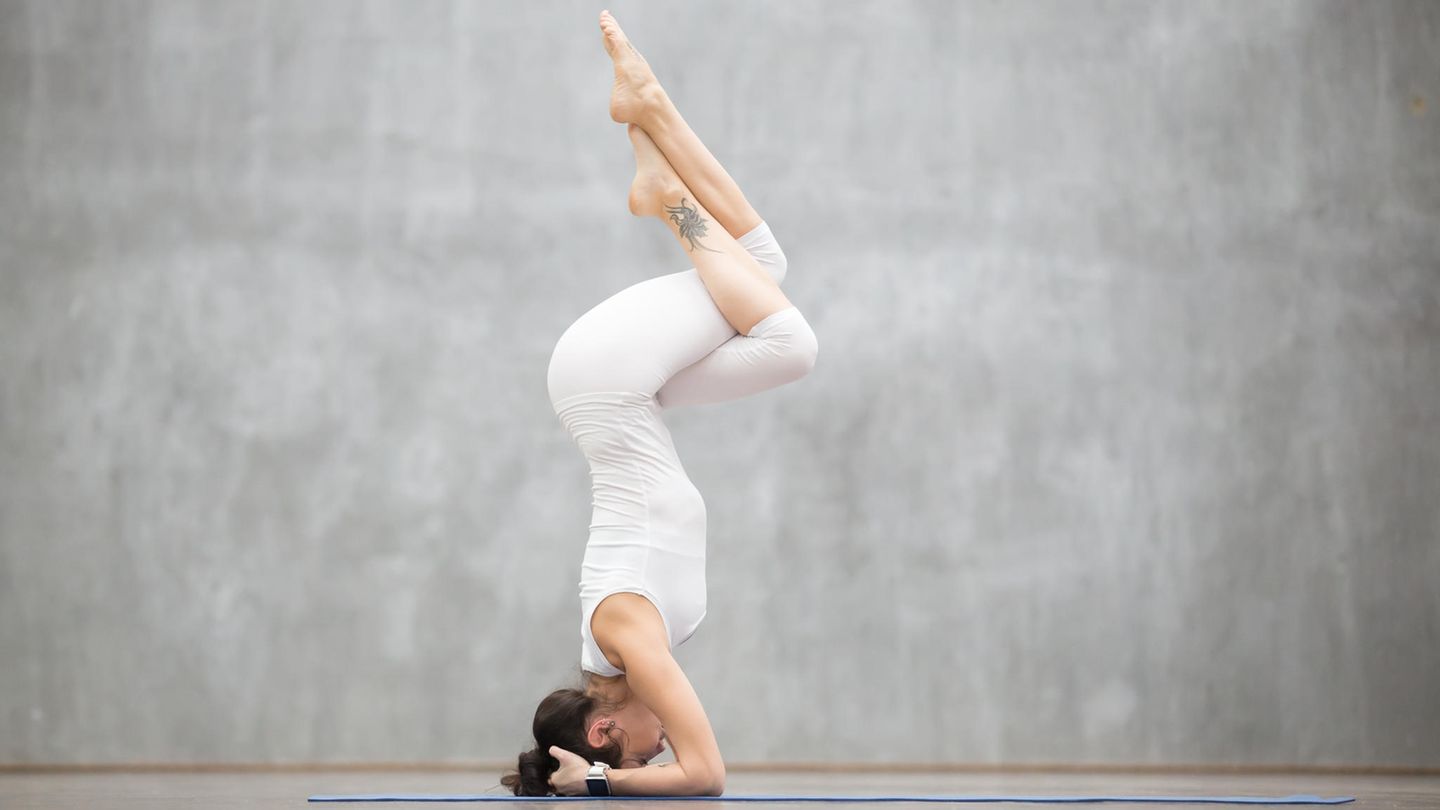The headstand is a classic Hatha yoga exercise that is primarily about balance between body and mind. This position, also known as “Shirshasana”, is anything but easy for beginners – but not impossible if they use a headstand stool to help them.
The Sanskrit name of Shirshasana is “śīrṣāsana” and is made up of two words: “śīrṣa” means “head” and “āsana” means “seat”. This means a headstand, also called an inverted posture in yoga. In addition to the inner balance, which is promoted during the exercise, the back and trunk muscles should also benefit from the position. Through the perfect symbiosis of strength and balance, body control and stamina. The headstand is easy for experienced yogis, but not an easy task for beginners. They are dependent on support from another person or a wall – unless they are using a headstand stool. Everything you need to know about it before you buy is explained below.
Fact check: what is a headstand stool?
In order to protect the head and neck area and thus minimize the risk of injury, investing in a make perfect sense. Due to its special shape, it not only supports the ascent into the yoga posture, but also ensures a secure hold during the pose. The lying areas can be used to support the arms, while the cushions provide optimal support for the shoulders and neck. This will reduce the pressure on the head (and cervical spine), which is usually where most of the load rests. In plain language, this means: The stool enables you to adopt the inverted posture more easily, in a more controlled and longer manner. But also other exercises on the are possible with the special device.
Shirshasana: What does a yoga headstand do?
One or two yoga beginners may ask themselves at this point why one should practice the inverted posture at all if one has not (yet) mastered it alone. In fact, Shirshasana has several advantages: The headstand strengthens the cardiovascular system, and brain function is also supposed to improve. This in turn has a positive effect on your ability to concentrate and counteracts tiredness. And last but not least, the exercise is simply fun if you can master it – whether with a headstand stool or without. Who wouldn’t want to turn the world upside down or look at it from a different angle every now and then?
Headstand stool: you need to know that about it
Most of the models will be made out or manufactured. The natural material is often preferred not only because of its pleasant feel, but also because of the fact that metal-like surfaces can be more slippery. The foam pads attached to it are almost always made of synthetic leather, which makes them easier to clean – and bare skin (for example on the shoulders) adheres better to it without slipping. Depending on the manufacturer, the headstand stool can withstand a maximum weight of 150 to 900 (!) Kilograms. Above all, it is important that the feet are non-slip so that you can easily perform the yoga reverse pose. If necessary, an anti-slip mat can be added here if the stool does not have a stable hold. However, many manufacturers have taken this point into account in their product.
Tips: How to do the headstand with the stool
To help you get started with the inverse yoga posture, the most important steps are summarized below:
- Take the headstand stool and place it close to a wall the first time you try – this allows you to support your feet if necessary.
- Kneel in front of the stool, grip the backrests with your hands and then put your head into the recess in the cushion.
- Straighten your legs and move as close as possible to the stool so that your back is as vertical as possible.
- Tense your abdominal muscles and slowly move your straight legs upwards, but with a little momentum.
- Hold the position as long as you can and correct your posture if the position feels too uncomfortable.
In addition to the headstand, many more yoga exercises can be carried out with the stool, as becomes clear in this video:
Alternatively, you can also use a (e.g. via Jochen Schweizer) online. In it you will learn everything about the basic knowledge of the Indian emptiness and will be introduced to the exercises step by step.
This article contains so-called affiliate links. Further information are available here.
I have been working in the news industry for over 6 years, first as a reporter and now as an editor. I have covered politics extensively, and my work has appeared in major newspapers and online news outlets around the world. In addition to my writing, I also contribute regularly to 24 Hours World.




